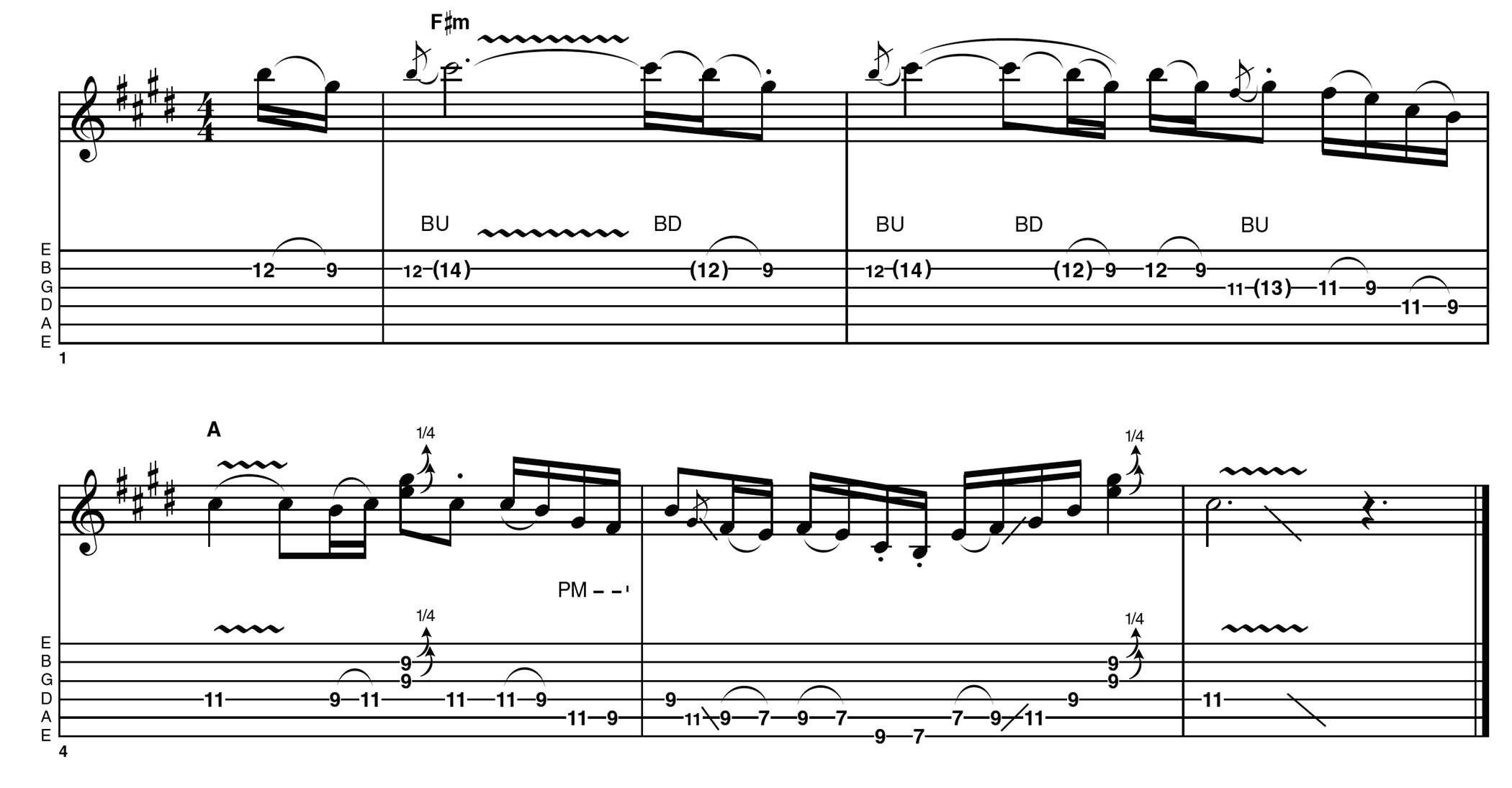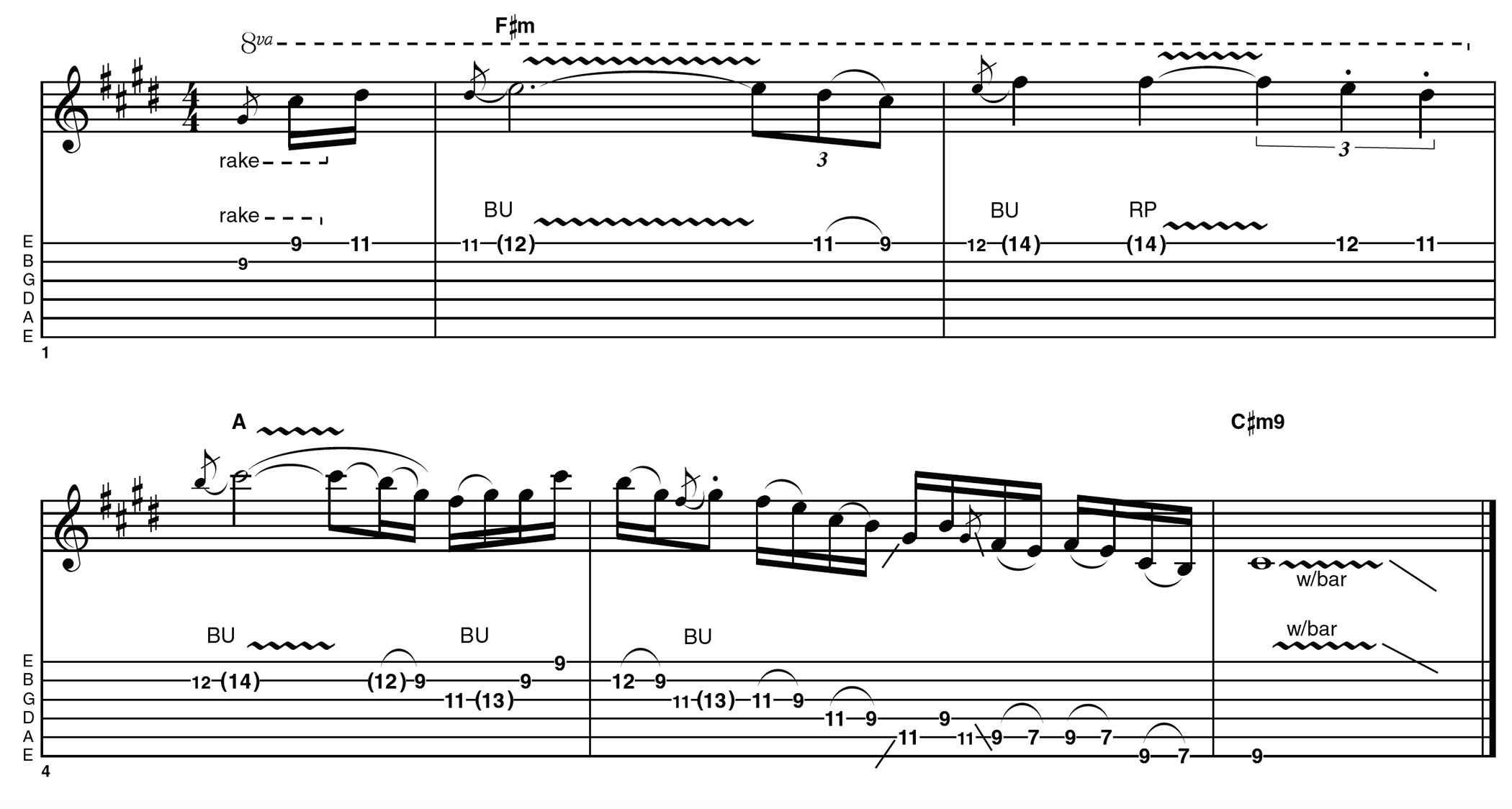David Gilmour didn’t just take the blues and transform it into epic psychedelic prog – he changed the way we play guitar solos
We examine how the Pink Floyd guitar hero altered the way we approach the blues – and it’ll whip your phrasing and feel into shape

Few players have taken the blues vocabulary and incorporated it into progressive and psychedelic rock with such eloquence. David Gilmour’s tone, note choice and sense of rhythm elevated Pink Floyd – and solos in general – to a different level when he joined the band in 1967.
As the era of the epic guitar solo dawned, David established himself as a soloist few could match, with a strong sense of melody and a knack for creating memorable parts – even in some of the more ‘out there’ freeform jams that were so characteristic of the early Floyd.
From this time up to and including The Dark Side of the Moon in 1973, there were strong echoes (pun intended) of Jimi Hendrix in David’s Fuzz Face’d ambient solos. From Wish You Were Here onwards, he refined his tones a little more.
There was still lots of edge when required, but he developed a more controlled sound, often featuring the latest gadgets as they became available: for example, the MXR Phase 90 features on Shine On You Crazy Diamond and Have A Cigar.
Though David is famous for his complicated multi-amp rigs and effects racks, he maintains that it’s possible to get the essence of his sound with relatively simple and easily available gear. This may seem hard to believe, but it is certainly true to say that David’s playing would be recognisable whatever he plugged into.
The example solo/licks here are inspired by his solos on tracks such as Comfortably Numb, On An Island and What Do You Want From Me. I’m using the bridge pickup with medium/high gain (not too much, though).
David is known for playing at high stage/studio volumes and gets most of his sustain from this, so be prepared to tweak and maybe add a little compression before any drive. A digital echo/reverb gives a nice finishing touch.
All the latest guitar news, interviews, lessons, reviews, deals and more, direct to your inbox!
Example 1
The first phrase establishes a strong beginning with the held bend, before playing around more rhythmically in this same area (shape 1 C# minor pentatonic) and reiterating the bend to finish.
Be very mindful of details such as vibrato, short staccato hits and bluesy quarter-tone bends. These are marked in the transcription, but in an ideal scenario you’ll eventually find yourself adding this sort of stuff in without thinking too consciously. That’s when you’ll know things are really coming together!
Example 2
Beginning in a similar manner to Example 1 with a held repeated bend, we soon kick things up a gear, shifting between shapes 1 and 5 of the C# minor pentatonic. A particularly notable feature here is the repeated use of that doublestop at the 9th fret of the third and second strings.
Pull this slightly sharp and you’re using one of David’s favourite devices, featured in many of his solos. Elsewhere, keep an eye out for little details like staccato notes and even a touch of palm muting.
Example 3
Reusing the last note of Example 2, we then rake quickly across a C# minor triad. You’ll recognise this as another favourite move of David’s; it’s a great way to add an exciting flourish without feeling the need to zoom around the fretboard.
We follow up with some funky doublestops and muted rhythmic hits. Maybe try a few different ways to finish this phrase using different rhythms or string bends. This could be the way to incorporate some Gilmour into your own style.
Example 4
Starting with a rake across the second and first strings, we then tackle a couple of held melodic bends. Be particularly careful when pitching these, as you’ll need to hold them there. The same goes for the following bar just before the staccato triplets.
We finish with the busiest passage of all, but it’s all taken from shapes 1 and 5 of the C# minor pentatonic, so we’re on familiar ground. Just take your time and don’t feel you need to duplicate exactly what is being played here. The vibe is what matters most.
Hear it here
Pink Floyd – The Dark Side of the Moon
Perhaps an obvious choice, but it would be difficult to justify not citing this one. Continuing somewhat from where 1971’s Meddle left off, David is still using a very Hendrix-influenced fuzz sound, though he’s already refining it with the liberal use of a Binson Echorec.
Check out his searing solo on Time, contrasting approaches on Money and some funky rhythmic Uni-Vibe (set to its fastest setting) on Any Colour You Like.
Pink Floyd – The Wall
Though tensions were apparently developing in the band by this point, it contains some of David’s finest recorded moments with a respectful nod to the Wish You Were Here album.
Check out In the Flesh? just to hear the power of his Strat tone, then The Thin Ice for a great example of how refined his lead tone had become at this point. Inevitably, we must mention the great Comfortably Numb, but do also check out the break on Young Lust.
David Gilmour – On An Island
This solo album is absolutely full of classic Gilmour solos. Particular highlights are the two contrasting solos on the title track, but be sure to listen to The Blue for some very wacky moments courtesy of the DigiTech Whammy pedal.
Take A Breath features a satisfying amount of aggression, and honourable mention should go to the almost hi-fi clean soloing on the final track Where We Start. Having an orchestra to back you probably helps with the inspiration!
As well as a longtime contributor to Guitarist and Guitar Techniques, Richard is Tony Hadley’s longstanding guitarist, and has worked with everyone from Roger Daltrey to Ronan Keating.









